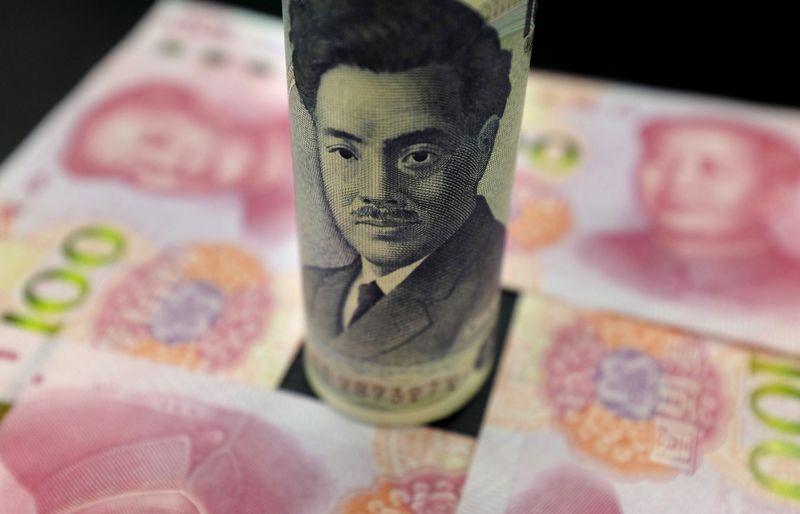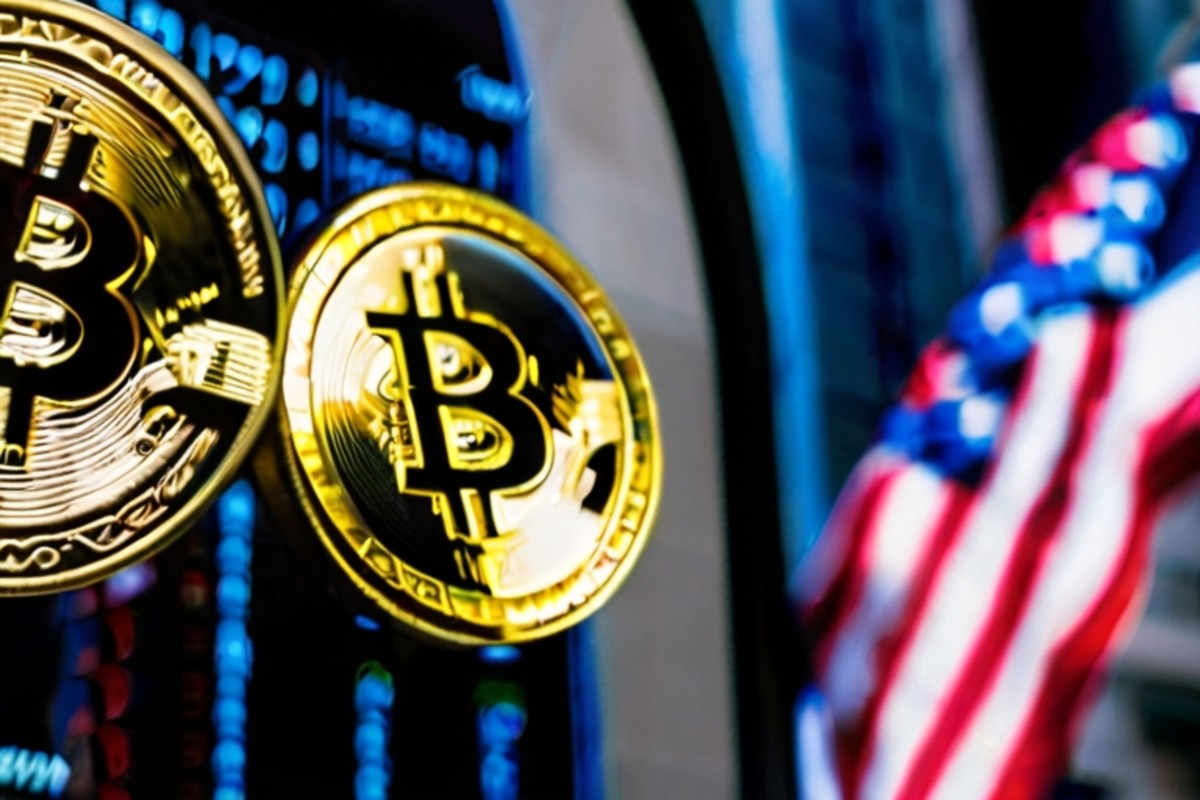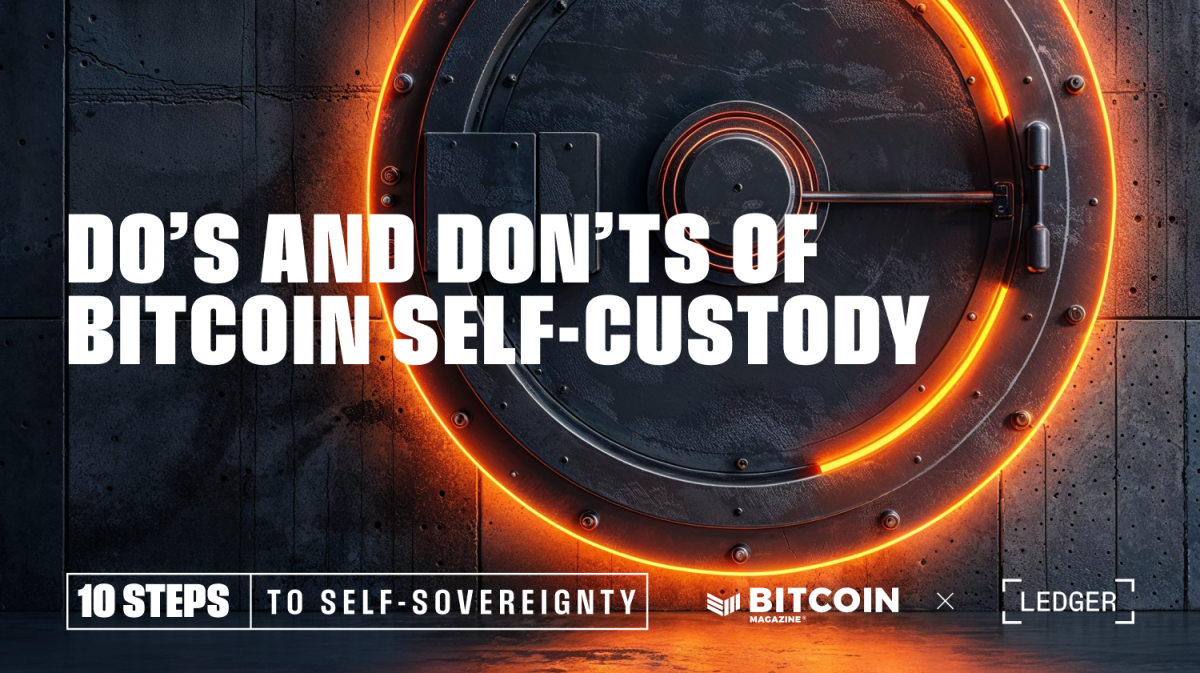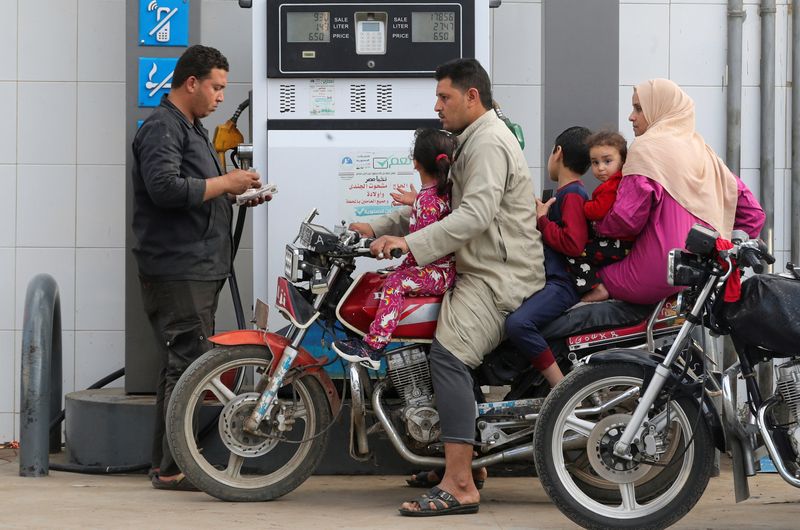Month: March 2024
Morning Bid: Yen and yuan feel the pain
Post Content
China yuan slides to four-month low, state banks step in
Post Content
Dollar strengthens after big shift in global rate outlook
Post Content
Bitcoin and Grain: a tale of two custodies
FTX’s collapse demonstrated the wisdom of segregating the activities of market making on the one hand (Alameda) from those of running an exchange (FTX) and a custodian (FTX again) on the other. However, the question of whether to segregate the activities of operating an exchange and a custodian is more nuanced. Large banks often run their trading businesses and their custody businesses in the same legal entity, using information walls to control for conflicts of interest and ensuring that their own assets are segregated from those of their clients. This paper will use the experience of the US grain industry in the late nineteenth century to illustrate the importance of controlling the risks between custody and execution activities.
Cryptoasset Custody
Cryptoasset custody is a complex undertaking involving, among other things, managing information security risk to protect private keys and keep transactions secure. Custodians also act as a form of payment service provider, receiving cryptoassets and sending them based on the instructions of their clients.
Many of the early cryptoasset exchanges bundled custody with execution for their largely retail client base and some continue to do so. When they first launched, the exchanges had to build the capability to safeguard their own assets. Extending this capability to their largely retail client base for free created much stickier client relationships and was an oblique way of monetising the sunk cost of their in-house custody arrangements.
Since FTX’s failure there have been both private sector and public sector efforts to change this model. The private sector has seen wider adoption of ‘Off Exchange Settlement’ (OES) by the large exchanges, often in response to the demand of institutional clients. OES seeks to mitigate counterparty risks by removing the need for clients to keep their cryptoassets at exchanges. This, incidentally, is how Zodia Markets was designed from inception. In the public sphere, there have been regulatory measures such as those by the SEC calling for Investment Advisors to only use Qualified Custodians for their clients’ cryptoassets. There have also been consultations such as the one by HM Treasury in the UK, which signalled support for the segregation of client assets from those of the exchanges those clients use.
Cryptoasset Exchanges
Cryptoasset exchanges and traditional exchanges had similar origins insofar as most began as informal venues for retail customers. On the cryptoasset side, Coinbase started as a private service to buy and sell Bitcoin through bank transfer, while Mt. Gox started as a trading service for card collectors. In the traditional world, the LSE started out as a private association of traders based in John’s Coffee House in the City of London, while in medieval Belgium traders convened at the Huis ter Beurze, a tavern, which gave its name to the term ‘bourse’, as in Deutsche Börse. Taking a broader perspective, exchanges are designed to fulfill five functions:
Standardization, such as through weights and measures or consistently designed trading contracts,Protection of property rights, such as through rule books,Enforcement of contractual agreements through sanctions for bad actors, Mitigation of information asymmetries by disseminating information, often through a transparent order book and Providing public goods by ensuring rules are adhered to.
Judicial and legislative sanctioning of these rules by the state tended to follow, rather than the other way round.
Omnibus and Segregated: Elevators and Sacks
The development of grain exchanges in the late nineteenth century United States, particularly the Chicago Board of Trade (CBOT), helps illustrate the tension between custodians on the one hand and exchanges on the other. During the late 1840s and early 1850s, the quantity of grain shipped to Chicago grew dramatically as the United States expanded west. Storage elevators operated by warehousemen were large, specialized warehouses where grain was kept in bins before shipment. In a sense they are equivalent to omnibus cryptoasset custodians where the assets of various owners are commingled in a single wallet.
The CBOT started out as a sleepy organisation, even having to encourage attendance at its meetings in the 1850s by providing free meals. The exchange grew to play a role in standardizing the grading, inspection and weighing of commodities, including grain, which is function 1 in the list above. The warehousemen who operated the elevators were at odds with the traders and shippers of the grain, who were more aligned with the exchange.
The storage of cryptoassets involves, among other things, the indexing of the chains and asset screening. Blockchain indexing eases the process of finding information stored in the blockchain rather than analyzing data block-by-block. It does this by parsing and storing the data in a centralized database where it can then be queried. Indexing is a form of confirming the on-chain property rights of the custodian’s client. This is function 2. Certainly, clients could do this themselves, but it is much easier to pay a custodian to do it on their behalf.
Screening and scoring are a financial crime monitoring measure that has no real equivalent in traditional finance, since it is specific to blockchains. Private firms provide scoring services to assess the financial crime exposure of a particular asset or wallet. If an asset or wallet has recently interacted with an address that is known to be associated with criminal activity, then the score is adversely impacted. This means that the notion that cryptoassets are perfectly fungible is not strictly accurate. Different wallets and assets have different scores. Where custodians operate omnibus wallets, so this affects the score of the overall holdings by commingling assets of different scores.
The same was true of grain in that it is not nearly as fungible as one might imagine. There are different grades depending on the growing area, such as Russian Rye wheat, River Plate wheat, East India wheat and so on. Other grading criteria included, for example, moisture content, foreign matter, and damaged grains.
The challenge in the United States was the scale and sophistication of the custodial infrastructure that collected grain into elevators before being transported. This was different from countries like Argentina where the infrastructure was less sophisticated, and grain was parceled into sacks for shipping.
Custodians that operate separate wallets for each of their clients are analogous to the grain sacks of Argentina. Omnibus grain elevators created economies of scale through quantity and scale. However, this came with the trade-off of making it harder to track quality compared with using grain sacks that could be tagged with a particular grade from the point of packing to arrival at the end customer. In cryptoassets omnibus wallets also create economies of scale, such as reducing on-chain transaction costs, but the scoring of individual sets of assets becomes more challenging if not impossible.
The Risks of Comingling and Custodians trading on own account
The commingling of grain allowed the warehousemen to engage in unscrupulous practices. For example, they could receive a shipment of grade one grain and then mix it with grade two to the point that it was still just within the acceptable range for a one grade. As a result, the warehouse was able to improve the quality of grain on its own account to the detriment of others. This of course resulted in a dead weight loss for those who had high-quality grain stored at the elevator. This discouraged farmers from ensuring their grain was of the highest quality. Further down the supply chain, shippers engaged in mixing to be as close to the threshold between grades, so the loss to the warehousemen would be minimized. In some senses there is a Gresham’s Law at work, with poor-quality grain driving out good quality grain. In summary, standardization and the protection of property, functions 1 and 2, became flawed.
One key difference between cryptoassets and the grain markets is that the grading and scoring of cryptoassets is conducted by third party private sector companies, since the data is public and anyone can do it. However, omnibus wallets do limit this capability since a great deal of trading activity can take place off-chain and then net settle to the omnibus wallet.
Another source of tension revolved around function 4. Warehousemen, who could trade on the exchange but also traded off the exchange in private transactions, had information about supply and demand as well as the qualities of grain in storage, thus creating a conflict of interest. While this information was their property and the treatment of information as property does act as an incentive to owners to produce and sell that information, there is a counterargument that mandatory disclosure can help prevent insider trading, market abuse and adverse selection.
What is key is where the warehousemen were able to commingle their own assets with those of their clients and where they were able to trade on their own account, they had the temptation to engage in abusive and illicit practices, which put them into conflict with the CBOT. It is no surprise that the responses to HMT’s consultation calling for firm and client assets to be segregated were overwhelming.
The CBOT had a long-running conflict with the warehousemen as it struggled to apply the same standardization of weights, measures, and grades as it had in other assets such as lumber. In 1906 the CBOT implemented the Call Rule that required that any private trades concluded off the exchange had to be at the closing price for the day. The warehousemen were more afraid of expulsion from the exchange than the costs of adhering to this rule so they adhered to it. The rule was also given judicial backing on this important market function. This allowed the CBOT to manage the conflict of interest around the warehousemen being able to trade on their own account, but critically that was not done by banning them from trading.
All of this meant that the economies of scale of elevators could be retained, while allowing for the conflicts of interest and other issues of tension to be managed. What is readily apparent is that banning elevators or preventing warehousemen from trading was never a realistic option. Technology and the economies of scale that it brought was held to be a fundamental good. Yes, it introduced new risks but over time the market and the regulators were able to manage these novel risks under a model that has operated for over a hundred years. One hopes that the same attitude can be brought to bear in the cryptoasset markets.
This is a guest post by Nick Philpott. Opinions expressed are entirely their own and do not necessarily reflect those of BTC Inc or Bitcoin Magazine.
BlackRock’s Robert Mitchnick: Bitcoin Is “Overwhelmingly” The Number One Priority For Clients
In a fireside chat today at the Bitcoin Investor Day by Reflexivity Research, Robert Mitchnick, the Head of Digital Assets at BlackRock, shared insights into the asset manager’s approach to Bitcoin, cryptocurrencies and the future of the crypto market.
Mitchnick emphasized that Bitcoin remains, overwhelmingly, the top priority for BlackRock’s clients, with minimal interest in other cryptocurrencies. He highlighted that the crypto community desires a broader range of crypto products from BlackRock, but the company’s focus remains on Bitcoin.
🚨NEW: @BlackRock’s Head of Digital Assets Robert Mitchnick addresses how the asset manager is thinking about other #crypto products:
“For our clients, Bitcoin is overwhelmingly the number one priority. And then a little bit ethereum, and very little everything else.”
He says…
— Eleanor Terrett (@EleanorTerrett) March 22, 2024
Regarding the future of Bitcoin on Wall Street, Mitchnick expressed optimism about a convergence between traditional finance and new technological advancements, stating, “Eventually we expect there will be a convergence where the best of the old system and the new technology will become fused into a new infrastructure system in finance.”
Earlier this year, the United States Securities and Exchange Commission approved a batch of spot Bitcoin Exchange Traded Funds (ETFs), including BlackRock’s application. Since then, their ETF has gone on to be one of the most successful ETF launches in history. BlackRock’s spot Bitcoin ETF $IBIT has seen net inflows for the last 49 days straight, something only 30 other ETFs have ever done, according to Bloomberg Senior ETF Analyst Eric Balchunas.
$IBIT and $FBTC have now taken in cash for 49 straight days, something only 30 other ETFs have ever done (and none of them did it right out of gate). Among active streaks they 4th after $COWZ $CALF (which are over 100 days, damn) and $SDVY. Great chart from @thetrinianalyst pic.twitter.com/CUxFNFa7tN
— Eric Balchunas (@EricBalchunas) March 22, 2024
The Bitcoin Company Launches Instant Cross-Border Payment API For Mexico and Brazil
The Bitcoin Company has unveiled its new Remittances API, allowing individuals and financial institutions to send instant payments to any bank account in Mexico and Brazil in under 1 second, according to a press release sent to Bitcoin Magazine. This API marks the company’s expansion into international remittances, with plans to extend services to the USA, Canada, Europe, Asia, and Africa soon.
We’re excited to launch our new Remittances API powering instant, cross-border payments for any app 🚀
One easy integration to send Mexican Pesos 🇲🇽 or Brazilian Real 🇧🇷 to local bank accounts in under 1 second⚡
More currencies & countries coming soon!https://t.co/jiAeh1NhRF pic.twitter.com/R63Z3mNnb3
— The Bitcoin Company (@theBTCco) March 22, 2024
“Disrupting the remittance market is a key milestone in our roadmap to provide easy to use Bitcoin-native financial services and has always been a compelling application for the Bitcoin network,” said Ben Price, Founder and CEO of The Bitcoin Company.” With Bitcoin, payments can be cheap, instant, inclusive, and global.”
By leveraging the Bitcoin network, The Bitcoin Company’s Remittance API offers a cost-effective alternative to traditional banking rails like SWIFT, reducing international remittance costs significantly. The API communicates with local payment networks in Mexico (SPEI) and Brazil (Pix), ensuring funds are deposited instantly into recipients’ bank accounts.
The remittance market in Mexico and Brazil has historically relied on costly services like Western Union and MoneyGram, which charge high fees. According to the World Bank, remittance payments to Mexico and Brazil cost 3.01% and 4.59%, respectively, with an average international remittance cost of 6.18%. The Bitcoin Company’s API disrupts this landscape by providing low-cost, instant, and 24/7 cross-border payments.
“Cross-border payments as they exist today are broken,” Price continued. “Traditional remittance providers like Western Union are taking advantage of the world’s most desperate populations by charging exorbitantly high fees for sending/receiving money. Cross border payments are now trivial with our new Remittances API that leverages the Bitcoin network. Our plans include expanding to more regions and currencies to service both business and consumer payments. We’re so happy to help enable other developers to turn on low-cost, cross-border, instant payments in their applications with a simple API integration.”
This launch aligns with The Bitcoin Company’s vision to provide easy-to-use, Bitcoin-native financial services and build developer-friendly infrastructure connecting Bitcoin with legacy financial systems. More information about the Remittance API can be found here.
The Dos and Don’ts of Bitcoin Self-Custody
Bitcoin is a completely decentralized system, there is no ability to reverse payments, and there is no customer support line where you can call for help if you mess something up. When you take self-custody of your own Bitcoin, you and only you are responsible for the safety of your funds. Self-custody also means that no one can freeze your funds, and no one can stop you from making a payment you want to make. It’s a double-edged sword: there are huge benefits to self-custody, but it also comes with responsibility.
If you make a mistake and send Bitcoin to the wrong address there is no undoing it. Then if someone can access your seed phrase (seed words), there is no customer support to help you, that person now has access to your money. If you lose your keys and your seed phrase backups, there is no recovery process to get your wallet back. It’s very much like cash in that regard: once it’s gone, it’s gone.
People generally go through life with no existential anxiety over having small amounts of cash but protecting significant amounts of money presents a source of worry, and Bitcoin is no different.
Custody and Crypto Wallets
When it comes to managing your Bitcoin, there are multiple types of wallets you can use. However, not all of them offer you true ownership of your assets. Here’s a breakdown of the types of wallets you will encounter and how they approach self-custody.
Custodial Wallets
Custodial wallets are generally offered by centralized exchanges, the same platforms that allow you to buy Bitcoin with fiat currency. These wallets work essentially just like a bank account. You do not actually have any control of your money. They can freeze your funds, lock and close your account, and deny you permission to make transactions or withdrawals with your own money. They do offer the potential to transact very cheaply with other users of the same wallet, but at the cost of giving control over your money to the custodian. They should never be used to store any significant amount of money, and any Bitcoin you purchase should be withdrawn to a non-custodial wallet as soon as possible.
Non-Custodial Wallets
Non-custodial wallets all offer true self-custody: only you have access to your assets. But even wallets that offer self-custody come with a range of trade-offs. They can also serve different purposes.
Software Wallets, also known as hot wallets, run on your mobile phone or your laptop computer. They do leave control over your funds in your own hands, but they manage and store the private keys on your device. This exposes them to the risk of compromise by hackers. You should only protect small amounts of money with a software wallet, what you reasonably expect to spend in a short time period.
A hardware wallet is a special device designed to keep your private keys as secure as possible. These devices are what you should use to store the bulk of your Bitcoin. They keep the private key offline and inaccessible to any threat from hackers, and allow signing transactions in a secure environment. A special note when using hardware wallets, the vast majority of them have a screen on the device that is used to display information about where a transaction is being sent before signing. Always double check the address and amounts shown by your device when signing to make sure the money is being sent to the correct place.
How to approach Self-Custody
Here are some basic steps you can take to ensure you are interacting with your Bitcoin in a safe and secure manner:
Test Your Backups
The first thing you have to do when taking custody of your own funds is to generate your seed words, also known as a seed phrase. This is like the master key to all of the accounts you will create with that wallet.
When you first complete the wallet setup, your wallet will generate a random number called a seed, or entropy. From there, your wallet will translate this number into 12-24 words called a seed phrase, or seed words.
Any wallet that is properly designed to encourage user safety should have you verify and prove you wrote down the seed phrase by challenging you on some (or all) of the words in it. If you are managing significant sums of money, it is always safest to double-check.
To follow, you will need to generate an “account” which will create your wallet’s first receiving address, which looks like this: bc1q653jc5hxawj5lwxgm8tt73qzw6rurmc5d42qd2
It never hurts to be safe and double-check things. After you’ve finished setting up your wallet, but before you start transacting, you can reset the wallet and re-initialize it. Instead of generating a new seed phrase, you can import the one you just backed up. If the first Bitcoin address is the same, you can be sure you’ve correctly backed up your seed phrase.
Send A Test Transaction
When it comes to making your first withdrawal from an exchange it can be a bit nerve-wracking. Is this address correct? Did I make a mistake? One of the scariest things for many people about Bitcoin is the digital nature of it. Everyone has in their mind this image from a movie scene where someone teenage hacker compromises a government system to further the plot. Most people don’t understand the first thing about how computers work, but they understand there are numerous ways they can be compromised or hacked.
I don’t know about you, but when there is a risk I am aware of that could affect me and I don’t understand how that risk exposes itself to me, I get worried. Just like verifying your seed phrase by recovering the backup before using the wallet, you can send coins to your wallet slowly. If someone were to compromise how you generated your wallet in the first place, they would be able to take any money you send to that wallet the instant you send it.
So just don’t send all of your money at once. Send a small test transaction with a tiny percent of the Bitcoin you intend to take into self-custody. Make sure those funds actually show up in your wallet first. To really be sure, you can even make sure that you can spend those coins by sending them back to the next address in your wallet.
After making a test transaction and ensuring that you have the keys needed to spend money sent to that wallet, you can deposit the rest of your money to that wallet. After a small test deposit without seeing such a transaction occur that you didn’t initiate, you can have much greater confidence that your wallet was set up securely.
NEVER Create Digital Seed Phrase Backups
Your seed phrase backup is your money. Whoever has access to your seed has full access to your funds. There is no customer support line to call, there are no chargebacks or insurance coverage for stolen funds in non-custodial Bitcoin wallets. If you mess this up, what’s done is done.
Hardware wallets that you actually use to sign transactions are specifically designed to hold the private keys your seed generates securely. When you make a backup of your seed phrase it should strictly be on something analog; a piece of paper, a steel plate with punched letters, something physical and completely offline.
You should NEVER do something like take a screenshot or picture of your seed phrase on your phone, or keep a backup in a text document or Google Cloud or iCloud. People’s computers and internet service accounts get hacked and compromised on a regular basis at very large scales.
Only keeping your keys stored on a physical medium like paper, and a secure device like a hardware wallet immensely lowers your risk of your coins being stolen through the compromise of your seed phrase. Your iCloud account can be hacked remotely from anywhere, whereas the seed phrase backup on steel in your safe requires someone to physically break into your safe.
Multisig Requires Extra Backups!
If you are using a multisig wallet, the seed phrase backups are not enough to recover your funds. The point of multisig is to increase your security by requiring more than one key to sign to spend your money. Typically, they will require a minimum threshold of devices that must sign each transaction. For example, it might require 2 out of 3 signatures. This ensures that someone compromising or you losing a key or two doesn’t result in losing your funds, but it comes with a nuanced catch. You can lose some of the private keys in a multisig, but if you don’t keep all of your public keys, you won’t be able to find your Bitcoin on the blockchain to spend in the future. This is due to how multisig wallets create the information necessary to process transactions.
When you make backups for a multisig wallet, each individual private key backup should also be accompanied by a backup of the public keys (wallets will call this an “xpub”) for all of the wallet addresses involved in the multisig. This ensures that you can find your coins on-chain even if you lose access to one of the accounts.
Never Talk About Your Stack
Being involved in Bitcoin can be a very exciting experience, especially when the price is going up. This can also be a liability depending on who knows about your Bitcoin holdings. As was mentioned earlier, if someone can gain access to your seed phrase they gain access to your money. Bitcoin has the potential to become immensely valuable in the future.
Owning Bitcoin is not a fact that you should be parading around to the whole world and everyone you know. Obviously, if you are married it will be very difficult to keep a significant sum of Bitcoin secret from your spouse. If you have very close friends, it’s something likely to come up or be observed by them over time.
But you don’t have to go telling everyone you meet that you own Bitcoin. And you shouldn’t. As Bitcoin has increased in value over the years, physical attacks on Bitcoiners in order to steal their money have become more and more common. The more people who know you hold Bitcoin, the greater your exposure to potential risks like that.
Don’t go blabbing your mouth off to everyone you meet about your Bitcoin stack.
Wrapping Up
Bitcoin can be, although it shouldn’t be, an intimidating thing to take possession of. It’s just like cash in a way, if you lose it no one can do anything about it. But in other ways, it’s not quite like cash at all.
People are worried about holding large sums of cash because if you lose it or someone steals it, it’s gone for good. Bitcoin can be backed up. If you lose your Bitcoin, you can literally just magically get it back if you have a backup. That’s because your Bitcoin isn’t in your wallet, your Bitcoin is stored on the blockchain. If you have a copy of your seed phrase you can regain access to all of your BTC no matter which wallet you use.
You can’t just “back up” physical cash. A xerox copy of cash isn’t cash, and won’t be treated as such by anyone. But a Bitcoin word seed phrase restores your access to your Bitcoin instantly. That should be an alleviation of anxiety when comparing Bitcoin to something like cash.
Multisig wallets offer an option to defend against theft. When you have a safe full of cash at home, someone can simply break into your house and take all of it. With a multisig Bitcoin wallet, if you only have a single key at home with you a thief cannot take your Bitcoin by breaking in and taking the key you have at home. This is something that cash cannot do.
Larger amounts of cash are a large incentive for thieves to target you. But if they don’t know you have a large amount of cash, they have no reason to target you. Just don’t tell them about it. Bitcoin isn’t a special variable here.
Bitcoin can be intimidating to self-custody because of the risks it shares in common with cash, but when you really take the time to learn what tools are available to help you self-custody it, it’s not that intimidating. In many ways, it can be safer than cash to hold yourself.
So stop worrying, have a little patience, and slowly take the time to learn the basic things you can do to protect your stack yourself. After a little while you won’t even think twice about it.
Dollar soars with U.S. economy on solid ground; sterling slumps
Post Content
Asia FX sinks as dollar surges to 3-week high after SNB rate cut
Post Content
Egypt raises wide range of fuel prices, official gazette says
Post Content







